Junkyard Find: 1948 Dodge Custom Sedan

For a few years after the end of World War II, Detroit's automakers sold mildly facelifted prewar designs while they made the switch back to peacetime production. Chrysler managed the feat for the 1949 model year; we admired a Plymouth Special Deluxe sedan from that year in a Colorado car graveyard last summer, and today we're going to take a look at an example of one of the last of the stopgap postwar Chrysler products: this '48 Dodge in a yard just south of Denver.
The 1946-1948 Dodges and Plymouths (and DeSotos) were mechanically nearly identical, but it was easy to tell them apart at a glance.
The Dodge of that period got this imposing slab of a rectangular grille and front fenders that extended into the front doors, while its cheaper Plymouth sibling got a more understated grille and shorter fenders.
The '48 Dodge looked old-fashioned in its day, and so I shot this photograph with an Ansco Memo camera (which was made to shoot then-cheap 35mm movie film) from the late 1920s.
Colorado Auto & Parts recently cleared out a remote storage yard, placing better than 100 vintage cars and trucks from the 1940s through the 1970s in the regular U-Pull-It inventory. That includes nearly two dozen 1964-1973 Ford Mustangs and Mercury Cougars, plus some fascinating European machinery. Look for more of this treasure trove in future articles from me.
It's nearly impossible to tell 1946, 1947 and 1948 Dodges apart, but the body number of this one says it's an early-model-year '48, built at the plant in Hamtramck, Michigan.
The 1948 Dodge came in two trim levels: DeLuxe and Custom. The metal trim around the windows says this is a Custom, the more upscale of the two.
The MSRP of a 1948 Dodge Custom four-door sedan was $1,788, or about $23,062 in 2023 dollars. Its Plymouth Special Deluxe counterpart started at just $1,529 ($19,722 after inflation).
This one has some pricey options, including an AM radio and a heater. Yes, heaters were considered frivolous luxuries by many buyers of affordable cars in the 1940s. Just wear warmer clothes for that drive across North Dakota in January!
Chrysler was still putting flathead engines in all of its North American-market cars and trucks in 1948. The overhead-valve Hemi V8 didn't show up until the 1951 model year (and didn't find its way into Dodge cars until 1954), and the overhead-valve Slant-6 didn't replace the flathead six in cars until the 1960 model year.
High-end Chrysler-badged models got straight-eight flatheads at this time, but 1948 Dodges got a 230-cubic-inch (3.8-liter) flathead six rated at 102 horsepower; the '48 Plymouths received the 217-cubic-inch (3.6-liter) version with 95 horses. This car's engine might be the original one, but swaps happened frequently with these cars.
Starting with the 1947 model year, Dodge cars got Chrysler's "Fluid Drive" transmission as standard equipment. This was a three-on-the-tree manual with a fluid coupling that required less use of the clutch pedal and fewer shifts. It wasn't an automatic, but it added a layer of idiot-proofing to the ordinary manual.
This car spent too many decades sitting outdoors to be worth restoring, especially given the relatively low value of immediate-postwar four-door sedans.
Some of its parts are in good enough condition to live on in other cars. I've already grabbed a few bits for my 1941 Plymouth project.
[Images: The author]
Become a TTAC insider. Get the latest news, features, TTAC takes, and everything else that gets to the truth about cars first by subscribing to our newsletter.

Murilee Martin is the pen name of Phil Greden, a writer who has lived in Minnesota, California, Georgia and (now) Colorado. He has toiled at copywriting, technical writing, junkmail writing, fiction writing and now automotive writing. He has owned many terrible vehicles and some good ones. He spends a great deal of time in self-service junkyards. These days, he writes for publications including Autoweek, Autoblog, Hagerty, The Truth About Cars and Capital One.
More by Murilee Martin
Latest Car Reviews
Read moreLatest Product Reviews
Read moreRecent Comments
- Kcflyer Joe also said don't trust the vaccine, until he was installed, then not only was the vaccine safe but if you didn't take it you were unpatriotic and if you happened to be in the military or government service you got fired. So simple idea, don't trust anything Biden says.
- 28-Cars-Later Let's review Ol' Joe's earlier thoughts on the matterTrump doesn’t get the basics. He thinks his tariffs are being paid by China. Any freshman econ student could tell you that the American people are paying his tariffs.The cashiers at Target see what’s going on – they know more about economics than Trump. #TeamJoe 1:59 PM · Jun 11, 2019I think the cashiers may also know more about managing the presidency too Joe. What is it you do again?
- 28-Cars-Later So the company whose BEVs are without proven lifespan and mired in recalls wants to further cheapen materials and mfg costs of the very same thing they already cannot sell? I don't know if Ford is going to still exist in 2030 (assuming the nation still does of course).
- Fred We want our manufacturing to pay good wages, provide healthcare, not pollute and provide a safe workplace. Many places around the world don't, so we put a tariff on them to force them. That's the way it should be, but I'm afraid this is just a political move by Biden to take away one of Trump's talking points.
- Orange260z Modern Cadillac sedans look and drive great. Yeah, the interior materials aren't quite as good as the competition, but if they undercut them in price it can offset. IMHO, they need to step up in a big way on their warranty, service and customer service. H/K/G shows confidence in the quality of the product by offering long standard B2B warranties and low-cost exclusionary extensions. My Caddy became a money pit after the warranty with only 75K kms; yes, the Germans do that, but they have the established cachet that they get away with it. They need to make sure that their cars still look good after 10 years (i.e. no trim issues, no undercarriage rust issues, etc) - my CTS was all rusty underneath after two years, they told me that was acceptable and not under warranty. Cadillac needs to do more.In Canada, there are few (if any) standalone Cadillac dealerships; they are typically co-located with all the other (remaining) GM brands. However, this doesn't have to be a kiss of death - Lexus successfully built their rep despite co-location, by investing in dedicated Lexus sales areas, sales people, service advisors, technicians, lounge areas with private offices, perks (free coffee/treats, car wash and vacuum with any service, a large complimentary Lexus loaner fleet available for any service visit), etc. By contrast, for Cadillac service I would line up with the 20 other people waiting for one of 5-7 service writers that know nothing about my car because they service 10,000 different GM models, answering a question about maintenance requirements "How am I supposed to know?". During the first 4 years I had access to complimentary Enterprise rental cars as loaners, but I had to spend 20-30 mins going through a car rental process every time. The guy who would do complimentary service washes did so with a big scrub brush he just used to wash a work truck that was covered in mud. They can't sell a premium car with crappy service like that, they have to be better than their competition.If it weren't for these issues I would not have hesitated to buy a new CT5 V-sport (winter DD, want AWD). I bought a G70 instead, we'll see how that goes - but at least I have a long B2B warranty.



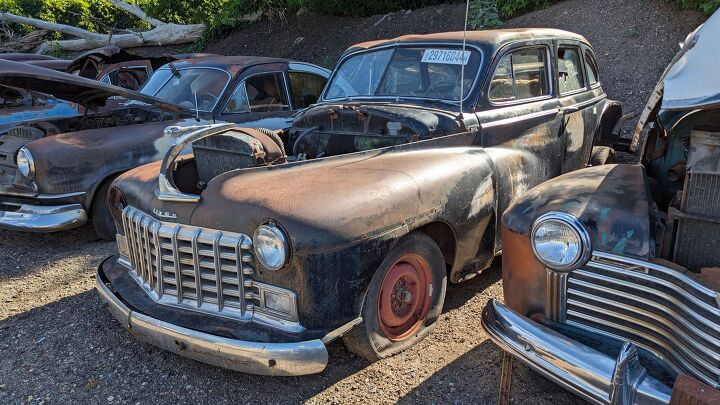



























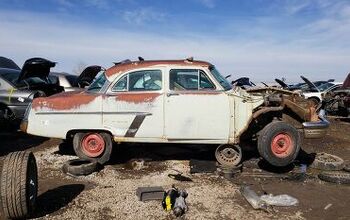
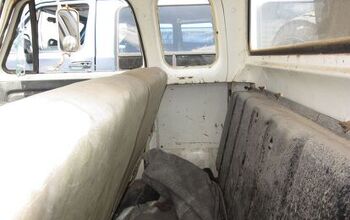
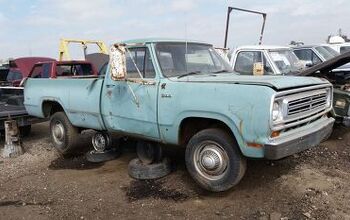
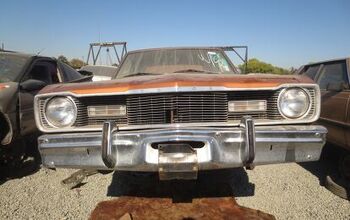










Comments
Join the conversation
Given that huge domed hood, you would expect the engine to be big, but it was for the huge radiator! Flathead engines had a tendency to run hot, with the intake/exhaust valves inside the engine block.
One advantage was that the flathead would run on lower octane and iffy gasoline, common in Europe in WW2. My uncle said the Dodges kept running in WW2, while the OHV GM trucks needed a lot of maintenance.
My uncle said he was an expert, because he was army infantry and would hop on any moving vehicle to avoid walking. He hopped on a GM truck that broke down and he had to help push it several miles. It was Ford or Chrysler products after that.
Brings back some memories. My dad bought a 1948 Dodge new. I remember picking it up at the dealership as a little kid. I remember one time he tried to get it up to 100 on a new highway. Pretty scary. I remember that it had fluid drive, but I never drove it. Kept it until 1956 when it was replaced by a new "forward look" Dodge, which is the car I learned to drive on.